

November 27 – December 3: “Infectious disease as antagonist?”
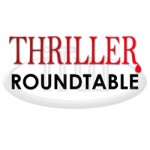 What better to discuss post-Thanksgiving than infectious diseases? This week we’re joined by ITW Members Tony Healey, Ludwig Lettau, Terrence P. McCauley, Michael Sears, Patricia Gussin, Kathleen Valenti, Martin Roy Hill and D. P. Lyle to answer the question: Can an infectious disease take the role of an antagonist in a thriller? Learn more by scrolling down to the “comments” section!
What better to discuss post-Thanksgiving than infectious diseases? This week we’re joined by ITW Members Tony Healey, Ludwig Lettau, Terrence P. McCauley, Michael Sears, Patricia Gussin, Kathleen Valenti, Martin Roy Hill and D. P. Lyle to answer the question: Can an infectious disease take the role of an antagonist in a thriller? Learn more by scrolling down to the “comments” section!
~~~~~
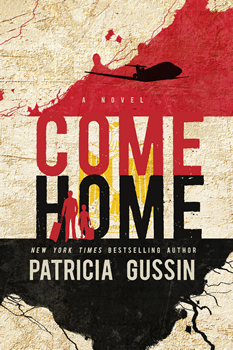 New York Times and USA Today best-selling author Patricia Gussin is a physician who grew up in Grand Rapids, Michigan, practiced in Philadelphia, and now lives on Longboat Key, Florida, with her husband Robert Gussin. She is the author of seven novels including Shadow of Death, Thriller Award nominee for Best First Novel, and After the Fall, winner of the Florida Book Award.
New York Times and USA Today best-selling author Patricia Gussin is a physician who grew up in Grand Rapids, Michigan, practiced in Philadelphia, and now lives on Longboat Key, Florida, with her husband Robert Gussin. She is the author of seven novels including Shadow of Death, Thriller Award nominee for Best First Novel, and After the Fall, winner of the Florida Book Award.
 Terrence P. McCauley is an award-winning writer of crime fiction and thrillers. The third novel in his University Series – A CONSPIRACY OF RAVENS – was published by Polis Books in September 2017. The other novels in the series, Sympathy for the Devil and A Murder of Crows were also published by Polis Books. Terrence has also written two award-winning novels set in 1930 New York City – Prohibition and Slow Burn.In 2016, Down and Out Books also published Terrence’s World War I novella – The Devil Dogs of Belleau Wood. Proceeds from sales go directly to benefit the Semper Fi Fund.
Terrence P. McCauley is an award-winning writer of crime fiction and thrillers. The third novel in his University Series – A CONSPIRACY OF RAVENS – was published by Polis Books in September 2017. The other novels in the series, Sympathy for the Devil and A Murder of Crows were also published by Polis Books. Terrence has also written two award-winning novels set in 1930 New York City – Prohibition and Slow Burn.In 2016, Down and Out Books also published Terrence’s World War I novella – The Devil Dogs of Belleau Wood. Proceeds from sales go directly to benefit the Semper Fi Fund.
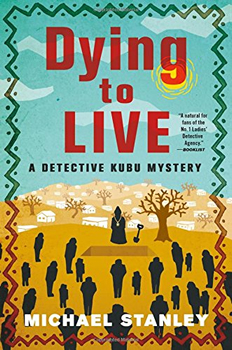 Michael Sears writes with Stanley Trollip under the name Michael Stanley. Their novels, featuring Detective Kubu, are set in Botswana, a fascinating country with magnificent conservation areas and varied peoples. The mysteries are set against current southern Africa issues such as the plight of the Bushman peoples of the Kalahari (DEATH OF THE MANTIS, shortlisted for Edgar and Anthony awards, won a Barry award in 2011), the pervasive power of witch doctors (DEADLY HARVEST, shortlisted for an ITW Thriller award in 2014), blood diamonds, the growing Chinese influence, and biopiracy. The latest book in the series is DYING TO LIVE.
Michael Sears writes with Stanley Trollip under the name Michael Stanley. Their novels, featuring Detective Kubu, are set in Botswana, a fascinating country with magnificent conservation areas and varied peoples. The mysteries are set against current southern Africa issues such as the plight of the Bushman peoples of the Kalahari (DEATH OF THE MANTIS, shortlisted for Edgar and Anthony awards, won a Barry award in 2011), the pervasive power of witch doctors (DEADLY HARVEST, shortlisted for an ITW Thriller award in 2014), blood diamonds, the growing Chinese influence, and biopiracy. The latest book in the series is DYING TO LIVE.
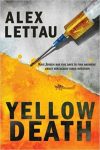 Alex Lettau is the pen name of Ludwig Alexander Lettau MD, a former medical epidemiologist with the CDC’s Division of Viral Diseases and current infectious disease specialist in Charleston SC where he lives with his wife Lisa, two daughters, and a Bouvier. His special interest as an author is infection-related medical thrillers. In his Indie award-winning thriller Yellow Death, the protagonist Kris Jensen becomes accidentally infected with an unknown lethal hepatitis virus and has only five days left to find answers to its origin.
Alex Lettau is the pen name of Ludwig Alexander Lettau MD, a former medical epidemiologist with the CDC’s Division of Viral Diseases and current infectious disease specialist in Charleston SC where he lives with his wife Lisa, two daughters, and a Bouvier. His special interest as an author is infection-related medical thrillers. In his Indie award-winning thriller Yellow Death, the protagonist Kris Jensen becomes accidentally infected with an unknown lethal hepatitis virus and has only five days left to find answers to its origin.
 Kathleen Valenti is the author of PROTOCOL, a medical thriller that examines the dangers of technology, the price of progress and the depths of greed to uncover what happens when the invisible among us disappears. PROTOCOL is the first of the Maggie O’Malley mystery series. The series’ second book will be released in Spring 2018. When Kathleen isn’t writing page-turning mysteries that combine humor and suspense, she works as a nationally award-winning advertising copywriter. She lives in Oregon with her family where she pretends to enjoy running.
Kathleen Valenti is the author of PROTOCOL, a medical thriller that examines the dangers of technology, the price of progress and the depths of greed to uncover what happens when the invisible among us disappears. PROTOCOL is the first of the Maggie O’Malley mystery series. The series’ second book will be released in Spring 2018. When Kathleen isn’t writing page-turning mysteries that combine humor and suspense, she works as a nationally award-winning advertising copywriter. She lives in Oregon with her family where she pretends to enjoy running.
 Martin Roy Hill is the author of the Linus Schag, NCIS, thrillers, the Peter Brandt thrillers, and the award-winning short story collection DUTY, and EDEN: A Sci-Fi Novella. Martin’s short stories have appeared in Alfred Hitchcock Mystery Magazine, ALT HIST: The Journal of Historical Fiction and Alternative History, Mystery Weekly Magazine, Crimson Streets, Nebula Rift, Devolution Z, and others. A former national award-winning investigative journalist, Martin is now a military analyst.
Martin Roy Hill is the author of the Linus Schag, NCIS, thrillers, the Peter Brandt thrillers, and the award-winning short story collection DUTY, and EDEN: A Sci-Fi Novella. Martin’s short stories have appeared in Alfred Hitchcock Mystery Magazine, ALT HIST: The Journal of Historical Fiction and Alternative History, Mystery Weekly Magazine, Crimson Streets, Nebula Rift, Devolution Z, and others. A former national award-winning investigative journalist, Martin is now a military analyst.
D. P. Lyle is the Macavity and Benjamin Franklin Silver Award winning and Edgar(2), Agatha, Anthony, Shamus, Scribe, Silver Falchion, and USA Today Best Book(2) Award nominated author of 17 books, both fiction and non-fiction. He has worked with many novelists and with the writers of the TV shows Law & Order, CSI: Miami, Diagnosis Murder, Monk, Judging Amy, Cold Case, House, Medium, Women’s Murder Club, The Glades, and Pretty Little Liars.
is the Macavity and Benjamin Franklin Silver Award winning and Edgar(2), Agatha, Anthony, Shamus, Scribe, Silver Falchion, and USA Today Best Book(2) Award nominated author of 17 books, both fiction and non-fiction. He has worked with many novelists and with the writers of the TV shows Law & Order, CSI: Miami, Diagnosis Murder, Monk, Judging Amy, Cold Case, House, Medium, Women’s Murder Club, The Glades, and Pretty Little Liars.
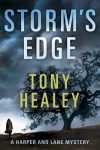 Tony Healey is the bestselling author of Hope’s Peak, the first book in his Harper and Lane series. It was the 20th bestselling novel of 2016 on Amazon and had over a quarter of a million readers. The sequel, STORM’S EDGE, released on the 10th of October, 2017. Both are published by Thomas and Mercer. Tony’s fiction has appeared alongside such award-winning authors as Alan Dean Foster and Harlan Ellison. He lives with his wife and four daughters in Sussex, England, and is at work on his next novel. He is represented by his agent Sharon Pelletier, of Dystel, Goderich & Bourret Literary Management, New York.
Tony Healey is the bestselling author of Hope’s Peak, the first book in his Harper and Lane series. It was the 20th bestselling novel of 2016 on Amazon and had over a quarter of a million readers. The sequel, STORM’S EDGE, released on the 10th of October, 2017. Both are published by Thomas and Mercer. Tony’s fiction has appeared alongside such award-winning authors as Alan Dean Foster and Harlan Ellison. He lives with his wife and four daughters in Sussex, England, and is at work on his next novel. He is represented by his agent Sharon Pelletier, of Dystel, Goderich & Bourret Literary Management, New York.
- LAST GIRL MISSING with K.L. Murphy - July 25, 2024
- CHILD OF DUST with Yigal Zur - July 25, 2024
- THE RAVENWOOD CONSPIRACY with Michael Siverling - July 19, 2024
